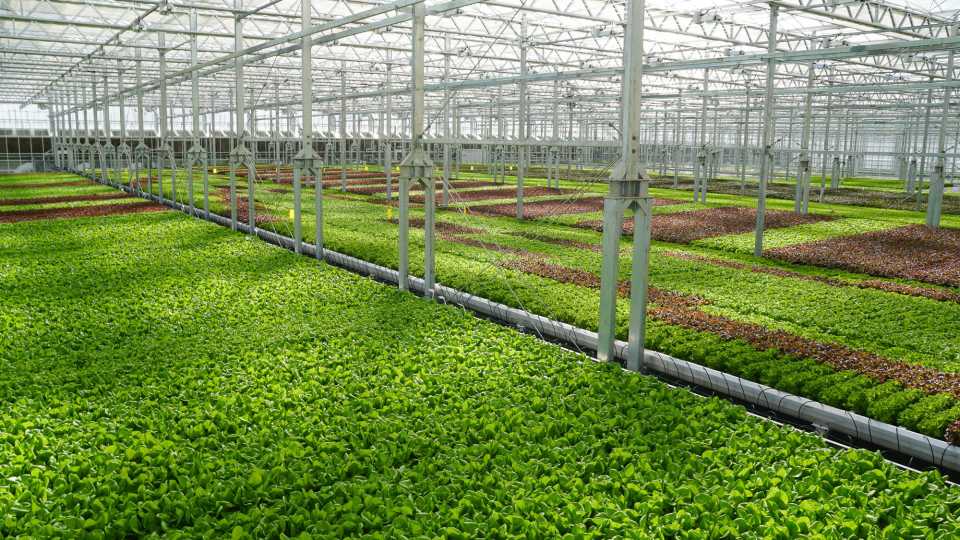Gotham Greens Opens West Coast Greenhouse, Obtains Certified B Corp Status

Photo courtesy of Gotham Greens
Indoor farming company Gotham Greens has officially opened the first phase of its 10-acre, state-of-the-art hydroponic greenhouse near the University of California-Davis campus. With this national greenhouse expansion, Gotham Greens will operate the nation’s largest network of high-tech hydroponic greenhouses spanning nine facilities in six U.S. states. The company’s sustainable farming practices allow Gotham Greens to grow salad greens and herbs year-round, while conserving 300 acres of land and 270 million gallons of water annually compared to conventional farming practices.
The company’s first greenhouse on the West Coast joins the brand’s existing network of hydroponic greenhouses located in New York, Illinois, Rhode Island, Maryland, and Colorado and enables accelerated growth for Gotham Greens on both a regional and national scale. Gotham Greens products are available at approximately 3,000 retail locations across more than 45 states.
The expansion also bolsters Gotham Greens’ strategic partnership with one of the highest-ranked agricultural research centers in the world, University of California Agriculture and Natural Resources (UC ANR) and UC Davis College of Agricultural and Environmental Sciences (UCD CAES). The greenhouse facility, located in Solano County, CA, will foster collaboration on research and innovation focused on advancing the science, workforce, technology, and profitability of the indoor farming industry.
“California is the center of North America’s leafy greens production, where water shortages, wildfires and other results of climate change are straining critical agricultural resources. By putting down roots in California, we aspire to be a part of the agricultural industry’s solution to the increasingly visible impacts of climate change,” says Viraj Puri, Co-Founder and CEO of Gotham Greens. “Our newest greenhouse facility in Northern California is strategically located to serve retailers and foodservice providers throughout the region more quickly while conserving precious resources, including land and water. We are excited to continue to expand our footprint, work in partnership with UC Davis and innovate with the agricultural industry in California for a better food system.”
The operation’s California greenhouse facility opening coincides with its achievement of Certified B Corp status, where it officially joins the ranks of vetted, environmentally conscious brands. The certification is a milestone in the company’s mission of driving the industry toward a more sustainable food system through industry-leading social and environmental practices.
“Our B Corp certification comes at a pivotal time for Gotham Greens as we celebrate our 10th anniversary, the opening of our California greenhouse and our plans for future growth,” says Jenn Frymark, Chief Greenhouse Officer of Gotham Greens. “The certification will add in additional layers of accountability and transparency for our employees, customers, retail and foodservice partners, and investors as we continue to innovate our food system to build a better future for generations to come.”
As Gotham Greens looks toward the future, the company is formally announcing new and rigorous outcome-based sustainability commitments, including:
- Goal 1: Reduce plastic packaging for leafy greens and herbs by 40% by 2024, Alongside the California opening, Gotham Greens is introducing new lidded film packaging for its salad greens, which reduces plastic packaging for our lettuces by more than 30%. The development marks progress toward the company’s goal of reducing plastic packaging for leafy greens and herbs by 40% by 2024 and 80% by 2030.
- Goal 2: Achieve a reduction of 5% in electricity use intensity by 2024 and reduce Scope 1 and 2 greenhouse gas emission intensity by 5% by the end of 2024. The company currently relies primarily on renewable electricity sources to power its greenhouse facilities.









